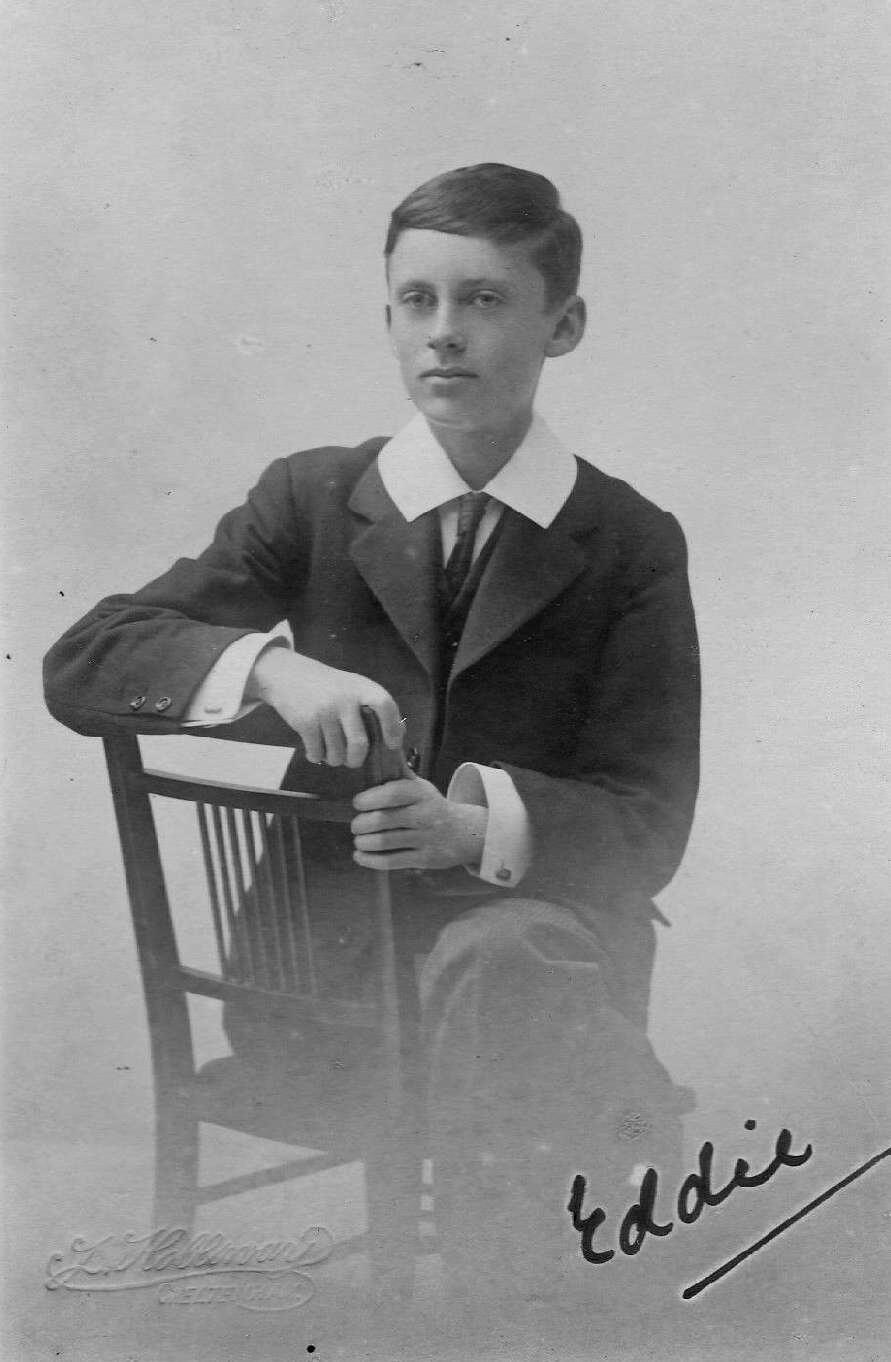
Figure 1.--This English boy wears a pristine, detachable Eton collar, probably about 1920. All we know about him is that his name was Edie. He looks to be about 13 years old. The studio and city is imprinted, but we cn not make it out. |

|
There are three basic shirt types. We note blouses, shirts and shirt waists. The prevalence and conventions of each as well as styles have varied over time. Our information on English blouses is still quite limited. The most common blouse was of course the sailor-styled middy blouse. We notice younger boys wearing fancy blouses trimed in lace and ruffles in a variety of different styles. Some appear to have been for formal occassions like weddings. The boy seen here was probably a member of a wedding party. They were not nearly as common as in France. We notice some younger boys wearing blouses with Peter Pan collars. After World War I, the blouse gradually becme more of a girl's garment, although younger bous might still wear them, especially for formal occasions. Shirts emerged as the standar top after World ar I. British boys commonly wore standard pointed collars. We do not notice boys in the post-World War II era wearing colorful shirts, perhaps because school uniforms became so common. Most boys wore plain grey shirts to school because they did not show the dirt. White shirts were also worn, especially for dress up occassions. Some readers in the 1960s and 70s recall wearing nylon white shirts. Some liked them, ithers thought that they uncomfotable. After World War II we begin to see blue shirts at some scools. Also button-down collars were not nearly as popular as in the United States.
Waists have differnt meanings. Shirt waist commonly means a short without a collar. They wre worn with detachable collars, especially Eton collars. This became a common practice when laundry was a major undertaking for the home maker who has to work without laundry deterchnts, a wasjhing machine, or even hot water tap. Scruboards were very common and were very labor intensice. They might also be worn casully without a detacable collar.
Our information on English blouses is still quite limited. The most common blouse was of course the sailor-styled middy blouse. We notice younger boys wearing fancy blouses trimed in lace and ruffles in a variety of different styles. Some appear to have been for formal occassions like weddings. The boy seen here was probably a member of a wedding party. They were not nearly as common as in France. We notice some younger boys wearing blouses with Peter Pan collars.
After World War I, the blouse gradually becme more of a girl's garment, although younger bous might still wear them, especially for formal occasions.
Shirts emerged as the standard top after World War I. British boys commonly wore standard pointed collars. We do not notice boys in the post-World War II era wearing colorful shirts, perhaps because school uniforms became so common. Most boys wore plain grey shirts to school because they did not show the dirt. White shirts were also worn, especially for dress up occassions. Some readers in the 1960s and 70s recall wearing nylon white shirts. Some liked them, ithers thought that they uncomfotable. After World War II we begin to see blue shirts at some scools. Also button-down collars were not nearly as popular as in the United States.
Waists have differnt meanings. Shirt waist commonly means a short without a collar. They wre worn with detachable collars, especially Eton collars. This became a common practice when laundry was a major undertaking for the home maker who has to work without laundry detergents, a wasjhing machine, or even hot water tap. Scrubboards were very common and were very labor intensive. The collar was the part of the shirt gthat got the dirtiest and most wear. This by detaching the collar, the shirt waist itself did not nedded to be washed as oftn and a fresh collar meant the boy looked very smart. They might also be worn casully without a detacable collar.
Navigate the Boys' Historical Clothing Web Site:
[Return to Main English shirt page]
[Return to Main English garment page]
[Introduction]
[Activities]
[Biographies]
[Chronology]
[Clothing styles]
[Countries]
[Photography]
[Topics]
[Bibliographies]
[Contributions]
[FAQs]
[Glossaries]
[Glossary]
[Images]
[Links]
[Registration]
[Tools]
[Boys' Clothing Home]
